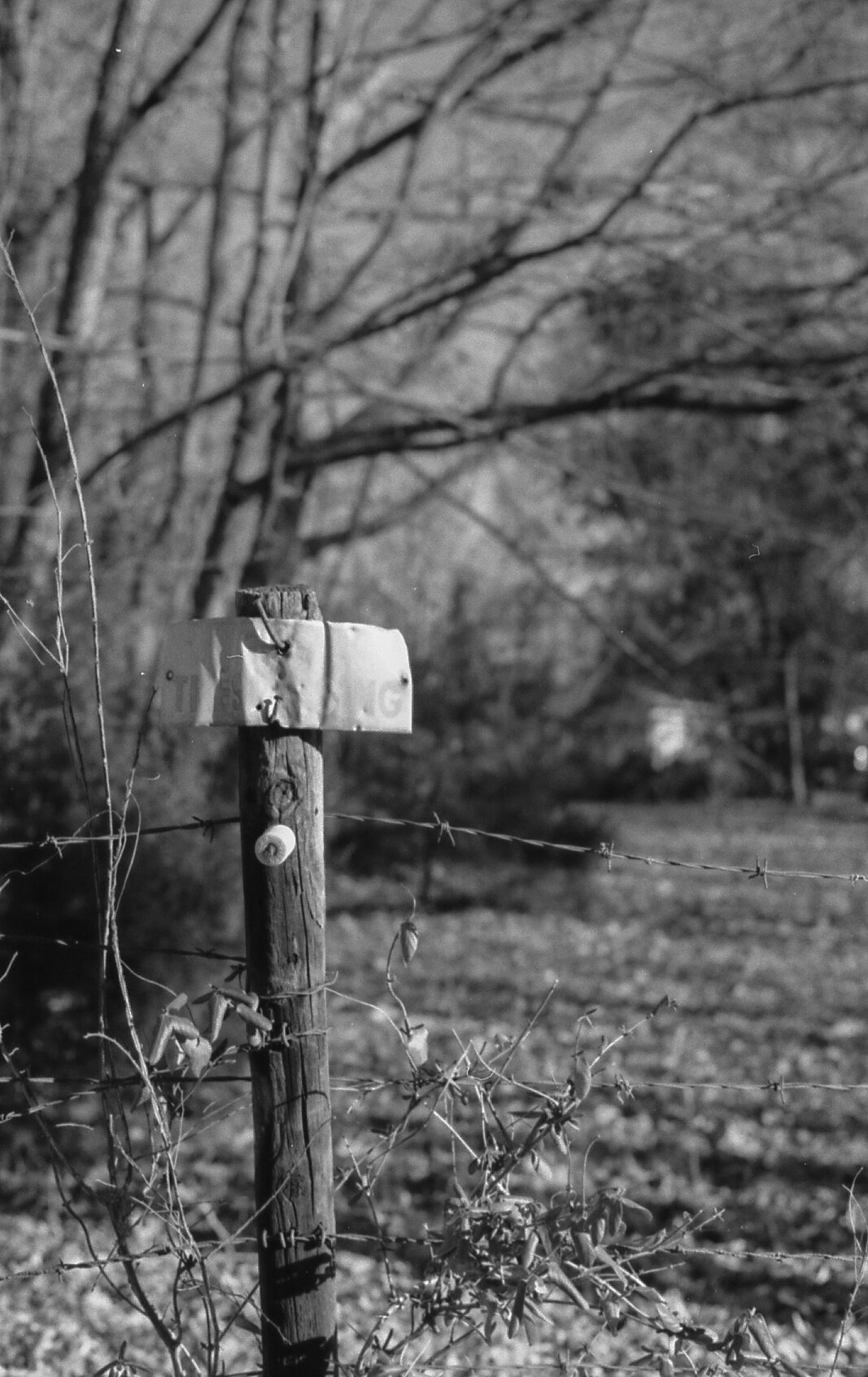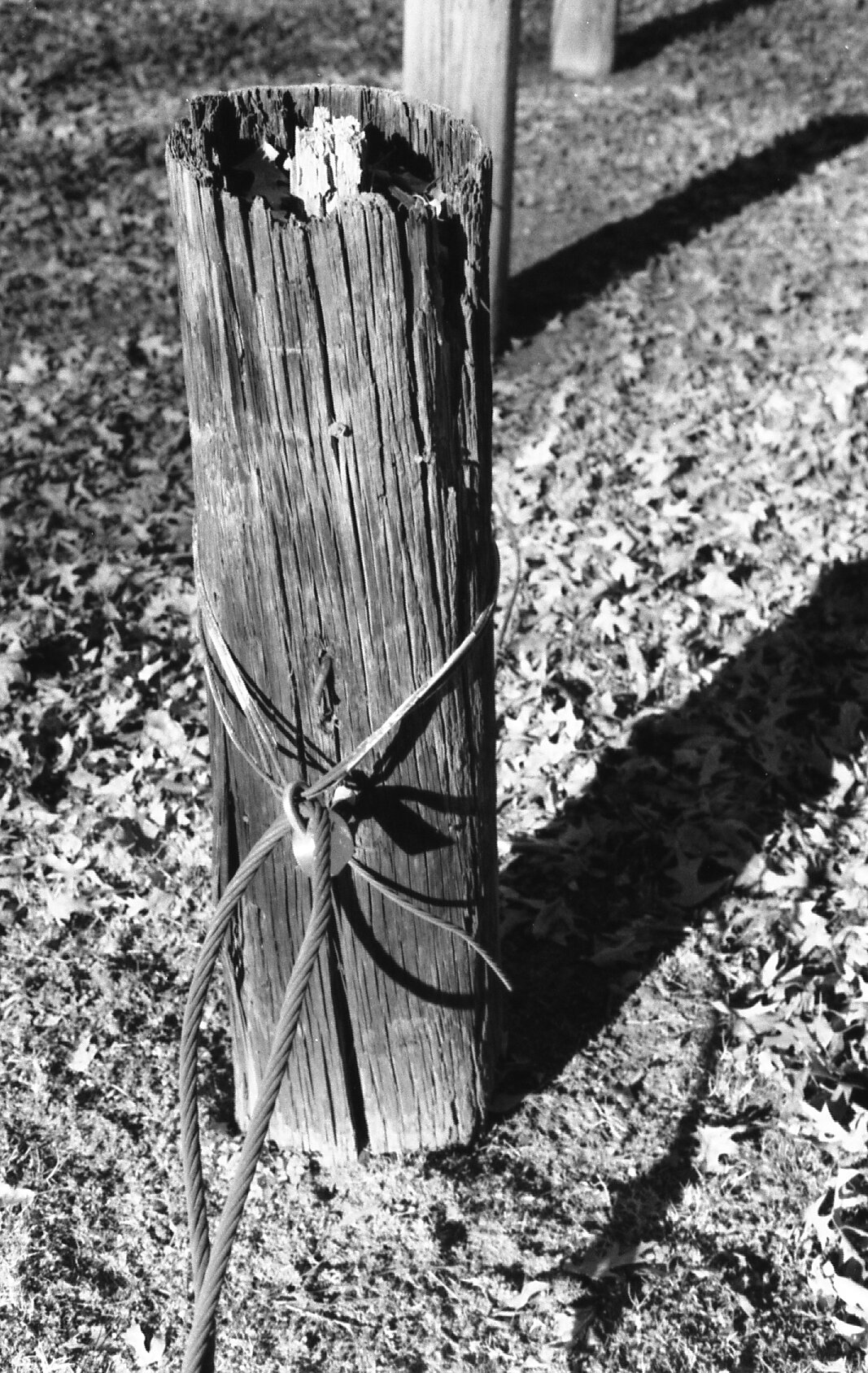This weekend I got a wild hare and decided to cross-process some of my color film. I had originally loaded the Leica M3 with some Fujifilm Superia Xtra 400 to get an idea of the way the new Voigtlander 50mm handled color. I went out into the gloomy southern winter of my neighborhood and snapped a roll. When I got back though, it occurred to me that I hadn’t cross-processed any color film in a while. So I chilled some D76 stock in the fridge, spooled up the Fujifilm Superia in the daysafe tank, and got ready to develop. When cross-processing, it’s important to remember a few things. First, doing color film in black and white chemicals is borderline dumb. It’s generally a waste of film as the real intent of cross-processing is to put C41 film in E6 slide chemicals and vice versa. This gives weird color shifts and some interestingly “lomo” contrast. It’s really fun doing Expired Color Reversal (Slide) Film in standard C41 chemicals. Ektachrome 100 is my favorite.Another thing one must consider is temperature. Black and White film is processed cold, C41 color film (standard color film) is processed warm (102.5F) and has to be coddled or you get weird color shifts anyway. There is also the chemical makeup of both color and monochrome film. Color is 3-layers deep — 4 if you’re using Superia — and the heat slowly works the chemicals through the layers when developing it. Monochrome is 1 layer, so a cold process is fine for it. In fact, too warm and you get grainy results.
When cross-processing, it’s important to remember a few things. First, doing color film in black and white chemicals is borderline dumb. It’s generally a waste of film as the real intent of cross-processing is to put C41 film in E6 slide chemicals and vice versa. This gives weird color shifts and some interestingly “lomo” contrast. It’s really fun doing Expired Color Reversal (Slide) Film in standard C41 chemicals. Ektachrome 100 is my favorite.Another thing one must consider is temperature. Black and White film is processed cold, C41 color film (standard color film) is processed warm (102.5F) and has to be coddled or you get weird color shifts anyway. There is also the chemical makeup of both color and monochrome film. Color is 3-layers deep — 4 if you’re using Superia — and the heat slowly works the chemicals through the layers when developing it. Monochrome is 1 layer, so a cold process is fine for it. In fact, too warm and you get grainy results. The chemistry doesn’t end there. Color film is a 4 step process: develop, bleach, fix, stabilize. Monochrome is only 3: develop, stop, fix. The bleach step in C41 is combined with the Fixer in the Unicolor kit so that cuts it down to 3 steps. I don’t use stabilizer, I just use a drop of dish soap in the last rinse. Bleach is important in color development. Metallic silver is created during development, and the bleach turns it into silver halide so it can be removed by the fixing agent.[1] The other reason it’s important — when developing color in D76 — is that it helps defog the film. Rapid Fixer doesn’t remove all of the layers, so the images appear thin. I found this out through experimentation.Heat, layers, chemistry, what does it all mean ?!? It means that we’re cold-processing a heat-developed film, and then “blixing” it with cold blix to get it nice and contrasty. The recipe is as follows:450ml (16 oz) D76 Stock (chilled to 64F)450ml (16 oz) Unicolor Blix (room temperature)Once you’ve got the film in the tank, pour the D76 in it. It’s a tad cold, but it’ll warm up to 68 pretty quickly. Agitate for 30 seconds, then after that agitate 10 seconds at the top of every minute for 12 minutes (up to 15 if you’re pushing the film). This is much longer than the 3:30 you normally develop C41 because your chemicals are cold now. Pour out your developer — it can be reused again — and rinse with water for a minute or so with the lid still on. Then pour in the blix. Agitate for 30 seconds, then 10 seconds at the top of every minute for 7 minutes. Pour out your blix — again, you can reuse it — and rinse for 3 minutes in luke-warm water. You can remove the top of the tank at this point, because the film is now developed and light-safe. During the last rinse, add a drop of dish soap, and hand-agitate the spool in the water for 30 seconds. Remove the film, shake it out, unspool it, squeegee it , and hang it to dry. It will look exactly like color film, except there’s no colors. I scanned it on the Epson V550 scanner as “48bit Color Film” and it still came out black and white. The above and below photos are straight scans, no touch ups. You can see that Fujifilm Superia and Kodak D76 can play nice, so put on your adventure time hat and go make some color black and whites!
The chemistry doesn’t end there. Color film is a 4 step process: develop, bleach, fix, stabilize. Monochrome is only 3: develop, stop, fix. The bleach step in C41 is combined with the Fixer in the Unicolor kit so that cuts it down to 3 steps. I don’t use stabilizer, I just use a drop of dish soap in the last rinse. Bleach is important in color development. Metallic silver is created during development, and the bleach turns it into silver halide so it can be removed by the fixing agent.[1] The other reason it’s important — when developing color in D76 — is that it helps defog the film. Rapid Fixer doesn’t remove all of the layers, so the images appear thin. I found this out through experimentation.Heat, layers, chemistry, what does it all mean ?!? It means that we’re cold-processing a heat-developed film, and then “blixing” it with cold blix to get it nice and contrasty. The recipe is as follows:450ml (16 oz) D76 Stock (chilled to 64F)450ml (16 oz) Unicolor Blix (room temperature)Once you’ve got the film in the tank, pour the D76 in it. It’s a tad cold, but it’ll warm up to 68 pretty quickly. Agitate for 30 seconds, then after that agitate 10 seconds at the top of every minute for 12 minutes (up to 15 if you’re pushing the film). This is much longer than the 3:30 you normally develop C41 because your chemicals are cold now. Pour out your developer — it can be reused again — and rinse with water for a minute or so with the lid still on. Then pour in the blix. Agitate for 30 seconds, then 10 seconds at the top of every minute for 7 minutes. Pour out your blix — again, you can reuse it — and rinse for 3 minutes in luke-warm water. You can remove the top of the tank at this point, because the film is now developed and light-safe. During the last rinse, add a drop of dish soap, and hand-agitate the spool in the water for 30 seconds. Remove the film, shake it out, unspool it, squeegee it , and hang it to dry. It will look exactly like color film, except there’s no colors. I scanned it on the Epson V550 scanner as “48bit Color Film” and it still came out black and white. The above and below photos are straight scans, no touch ups. You can see that Fujifilm Superia and Kodak D76 can play nice, so put on your adventure time hat and go make some color black and whites!


Leave a Reply
You must be logged in to post a comment.